Figuring Out The McLaren 720S Spider In The Desert
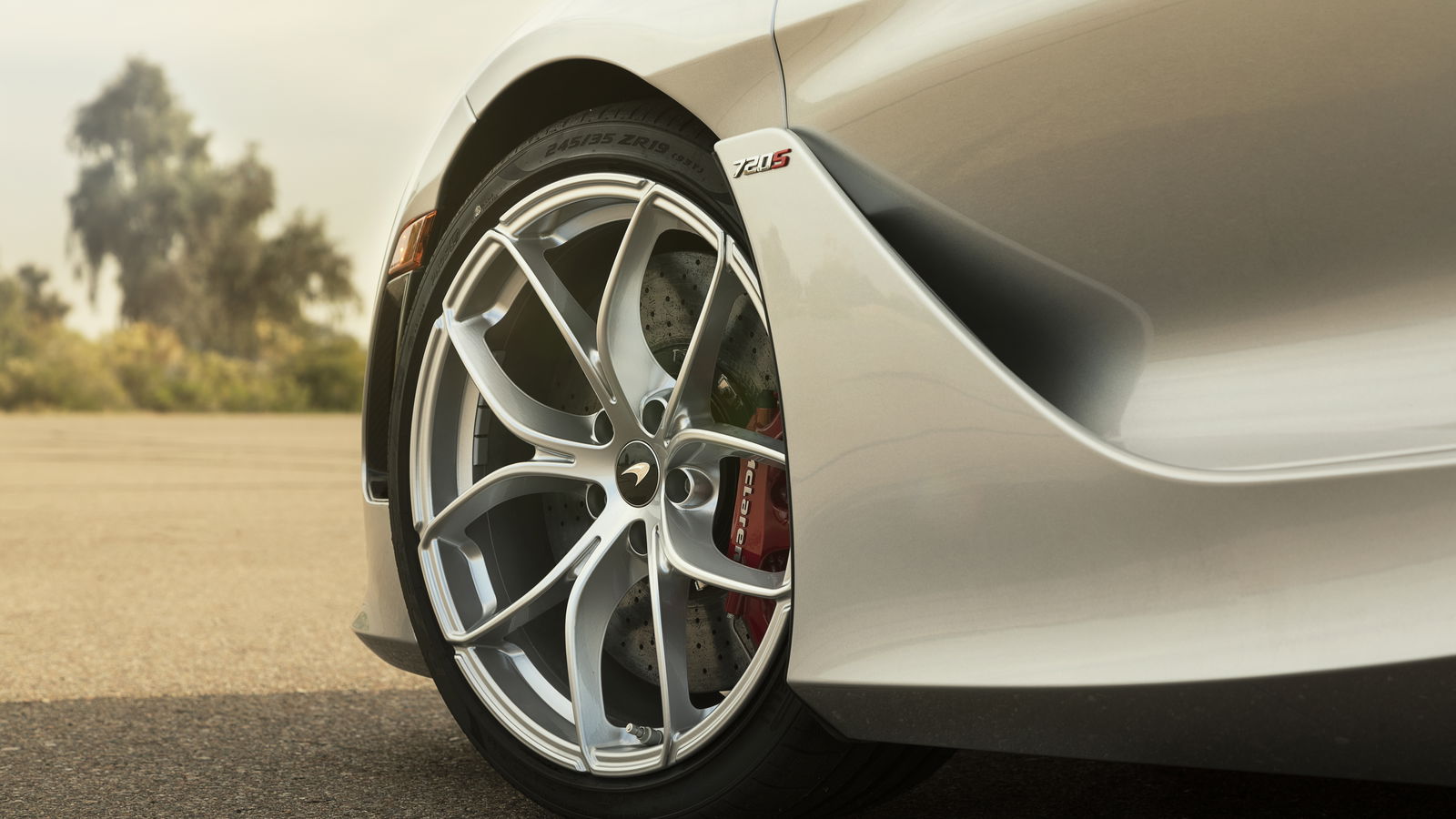
Pros
Cons
The saguaro cactus likes to take things slow. The main section takes decades to grow, with the prickly plant’s first arm not sprouting until anything from 75 to 100 years into its life. The average life expectancy of a saguaro is about 150 years, nicely juxtaposing the shiny new supercar that’s noisily blasting past a seemingly endless expanse of the things.
As well as being a shiny new supercar, the McLaren 720S Spider is also from a shiny new brand. You can bang on about the glory days of Gordon Murray’s seminal F1, but McLaren Automotive as we know it now has only been around since 2010. And damn, has it sprouted its appendages rather a lot faster than a saguaro.
The pace of change since the reveal of the company’s first car - the 12C - has been astonishing. McLaren has cooked up a further 17 different models since then, and is due to launch 15 more by 2025, while the 12C itself has morphed into the 650s before being usurped by the all-new 720S.
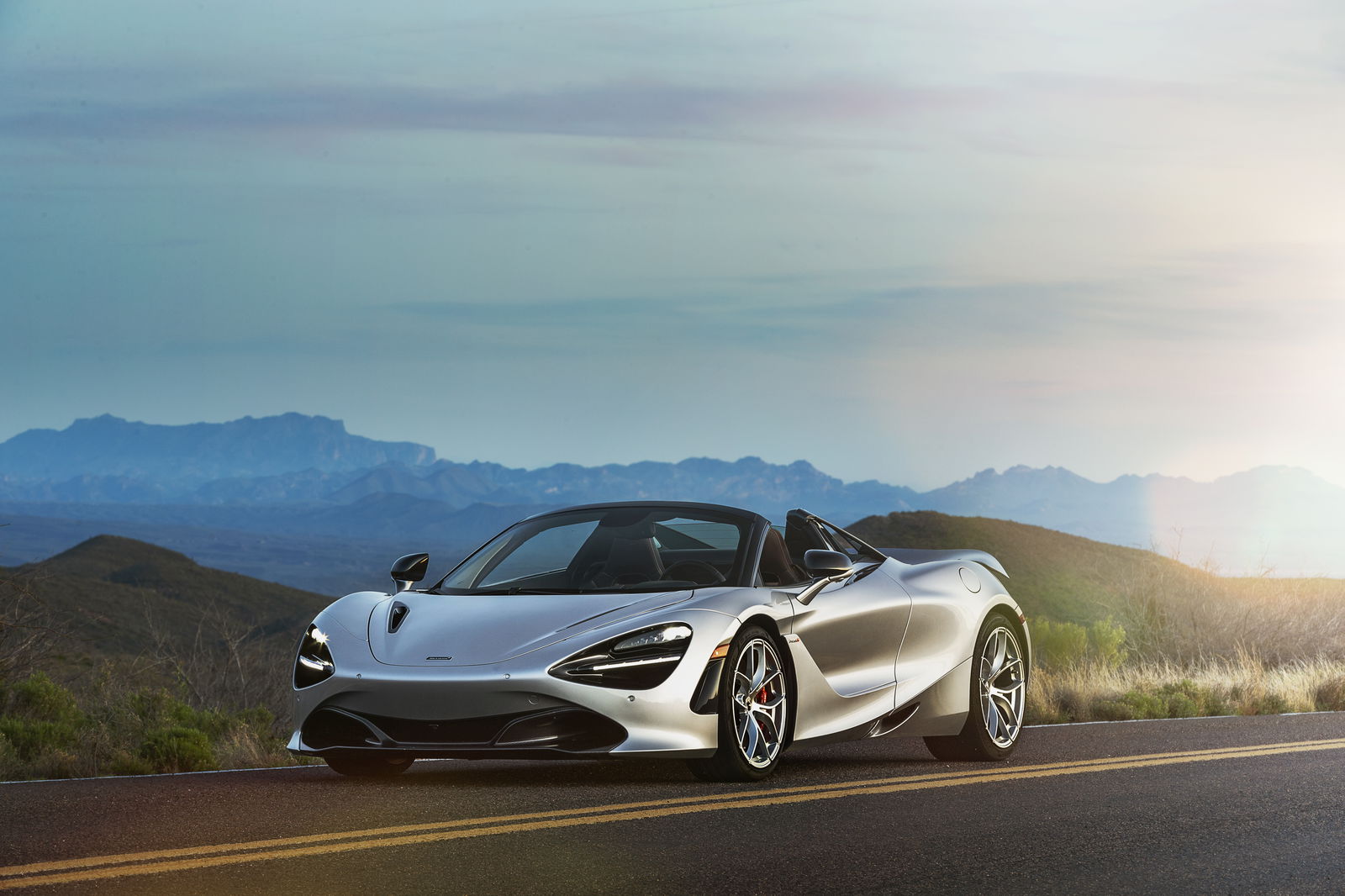
Inevitably, there is now a drop-top 720S Spider. And the temptation to refer to the process of creating a convertible supercar as ‘lopping the roof off’ is all too strong. Almost every motoring hack out there has surely done this at some point, myself included, but it’s rather disingenuous given how much engineering goes into these cars, not least for McLaren convertibles.
Woking created a whole new folding hardtop mechanism for the car that neatly packs itself away in a mere 11 seconds, down from 17 in the 650S Spider. You can now drop it or raise it at speeds of up to 31mph, where before the barrier was at 20mph. Oh, and the whole arrangement is 6.8kg lighter than that of the 650S.
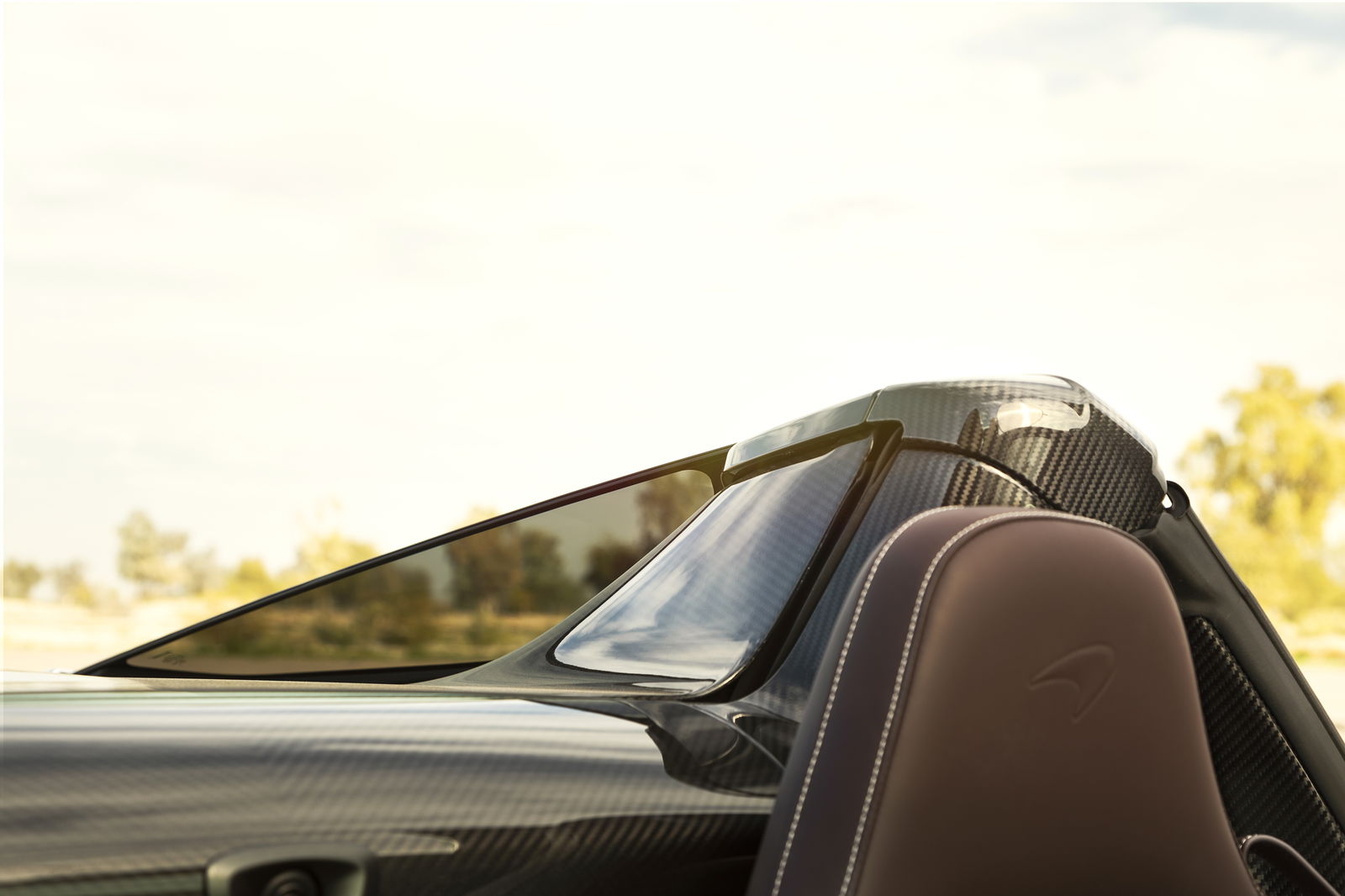
The roof section itself is now a single piece, no longer split in two. This looks neater when raised, but more importantly, no longer having two big slabs stacked on top of each other means the rear deck is much lower than before, increasing rear visibility. It’s not until you jump in a 600LT Spider (conveniently present at this launch too) and take a look over your shoulder that you realise the difference - suddenly it feels like the rear of the car is towering over you.
The view out the back is further improved by the patented part-glazed rear buttresses, which also happen to look awesome. The changes at the rear are certainly the most substantial, but plenty has been done to the front and sides too. Doing away with the party-piece dihedral doors would be unthinkable, so McLaren had to relocate the mounting point, shorten the doors themselves (which now have a greater angle of opening) and swap the front wings, the shut line having moved further forward.
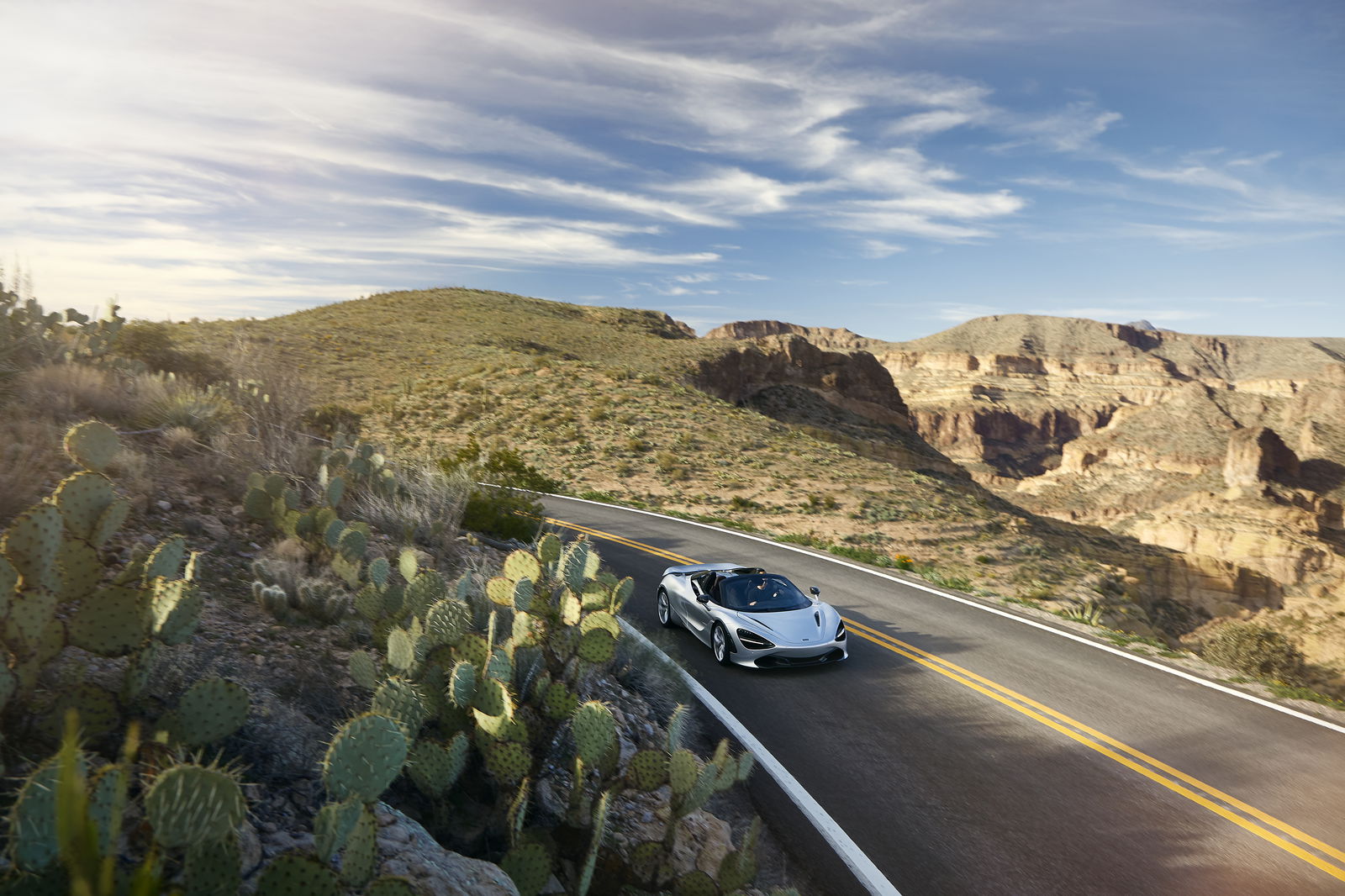
So it’s just as easy to see out of as the coupe, actually easier to get in to, and crucially, as with all McLaren Spiders, there’s no discernible performance penalty to lopping the roof off (sorry). The company’s insistence on building their cars around carbonfibre tubs perhaps pays off the most when it comes to making these convertibles - removing the roof section of the ‘MonoCage II’ makes no difference to rigidity.
You should know the benefits of this arrangement by now - all that nasty, bulky under-body stiffening usually found underneath convertible supercars just isn’t necessary, meaning the weight increase is minimal at 49kg - most of that is related to the roof mechanism. To sum up, it won’t flex any more than it did with a solid roof, it’ll be just as nimble, and it’s just as fast. Well, the 0-124mph time has increased by 0.1sec to 7.9 seconds, but I somehow doubt you’ll notice that at your next Vmax 200 outing. At this point, it’s also worth pointing out it’ll happily do 202mph with the roof down.
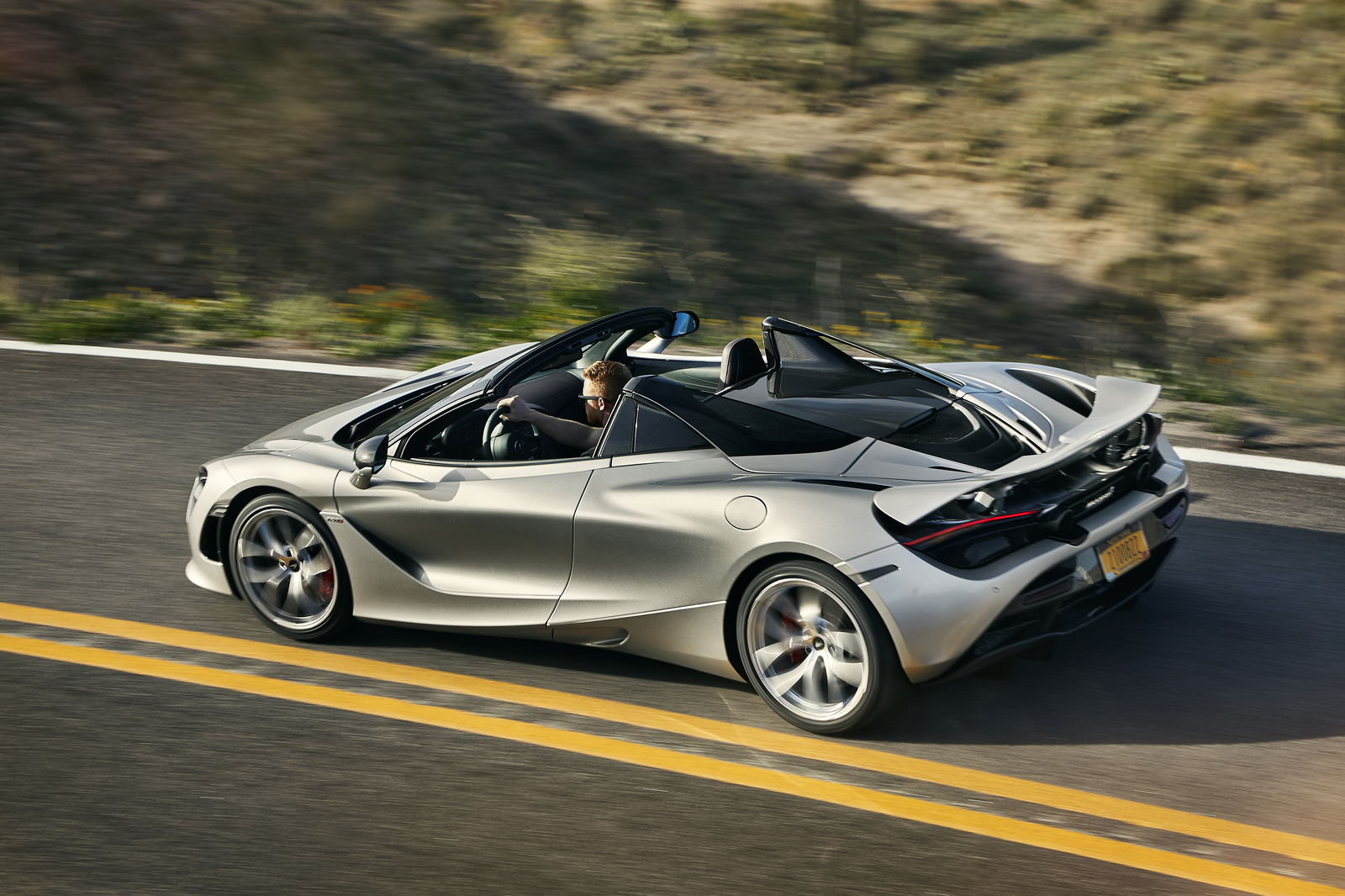
Testing the McLaren 720S Spider, then, is not about detecting every slight dynamic difference between it and the coupe. No, it’s more about seeing what’s been added to the experience of infinite headroom in one of the world’s most capable supercars. You ideally want to go somewhere it’s likely to be dry and warm even in January, which is why I’m leaving a raucous trail of V8 noise through the desert in Arizona. Where it’s currently raining. Ah.
While this isn’t exactly what I was wanting to get out of today, the damp conditions do show there’s credence in McLaren CEO Mike Flewitt’s suggestion that the power war has been taken about as far as it can - transferring the car’s full 710bhp fury onto the damp, sandy roads here involves a battle between traction control, the 4.0-litre twin-turbo V8 and the laws of physics, from which no one emerges a victor.
That said, you have to hand it to the package of electronic aids here for allowing a surprising amount of slip without abruptly shutting the party down and spoiling forward momentum, even in the punchy 3000 - 4500rpm portion of the range. It’s here there’s a noticeable winding up of boost from the V8. McLaren is trying to smooth out this area to make the engine feel more naturally-aspirated and less turbocharged, and while I can see why, I’d rather it stayed - it’s arguably here the un-catchily-named M840T feels its most dramatic.
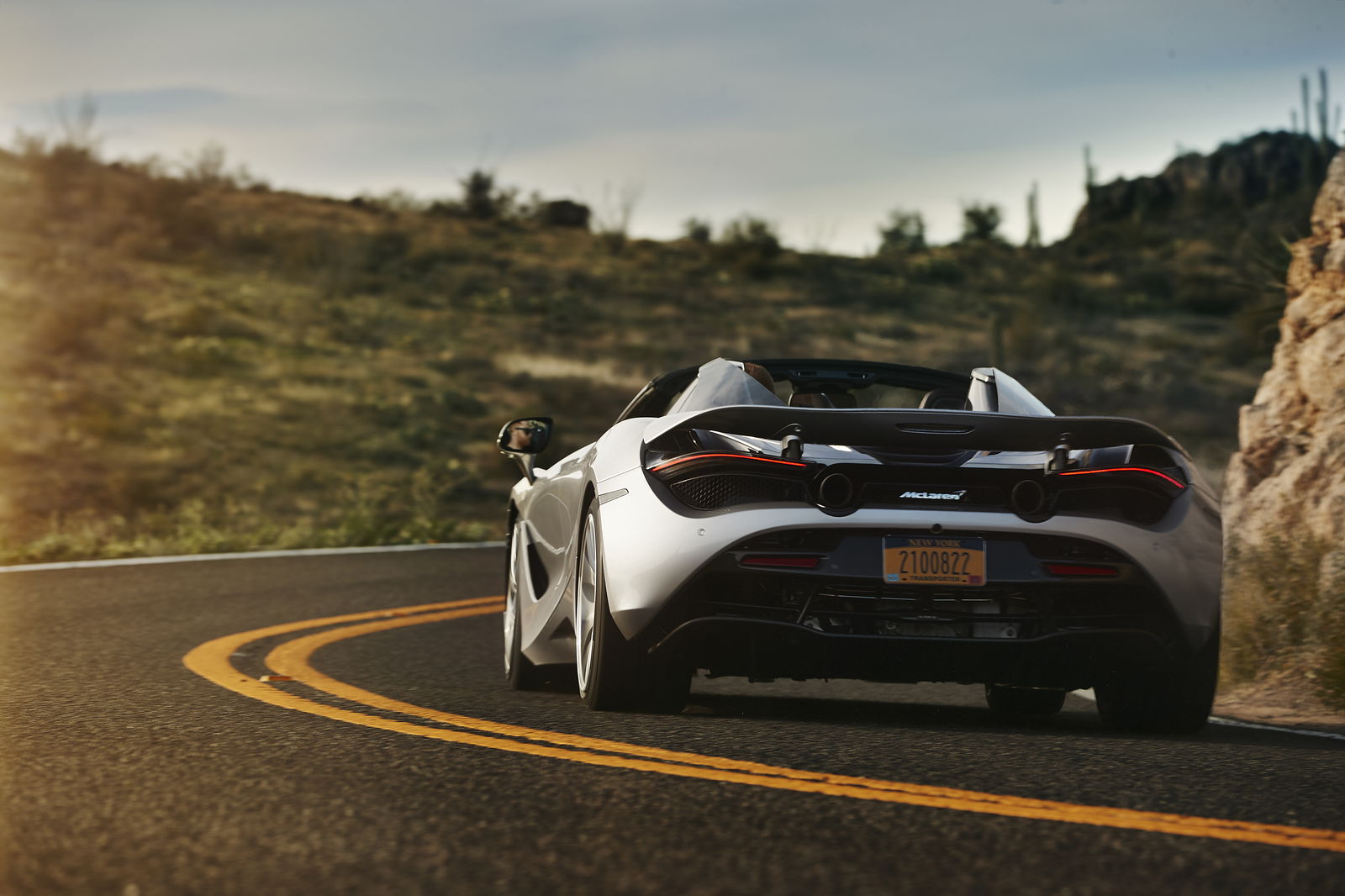
The second most dramatic point is the heady 8000rpm redline. After that intestine-scrambling boost threshold portion of the rev range is dispatched, it’s a smooth, N/A-like sweep up to the top. This 4.0-litre unit - which shares a block with the 3.8 but with a longer stroke and 41 per cent new parts overall - really is one that lets you have the best of both worlds. If only it sounded better.
The noise from those fat tailpipes is certainly one of intent, but in the brief moments I find traction and explore the upper reaches, there’s a distinct lack of character. It’s a nicer din than Ferrari’s turbo V8, but that’s a pretty low benchmark. And need I remind you of the soundtracks of the V10s and V12s used by Lamborghini?
"Even on a wet, quiet day like today, the arrival of this other-worldly coupe still doesn’t go unnoticed"
The trade-off arrives at the first serious set of corners, where dynamically, the 720S quickly makes much of the competition look wholly inadequate. The enormously complex hydraulically-linked suspension system - which does away with the need for anti-roll bars - makes for a soft and almost floaty feeling mix with ultra-flat composure and peerless lateral grip, a nonsensical combination for anyone with even a vague understanding of vehicle dynamics.
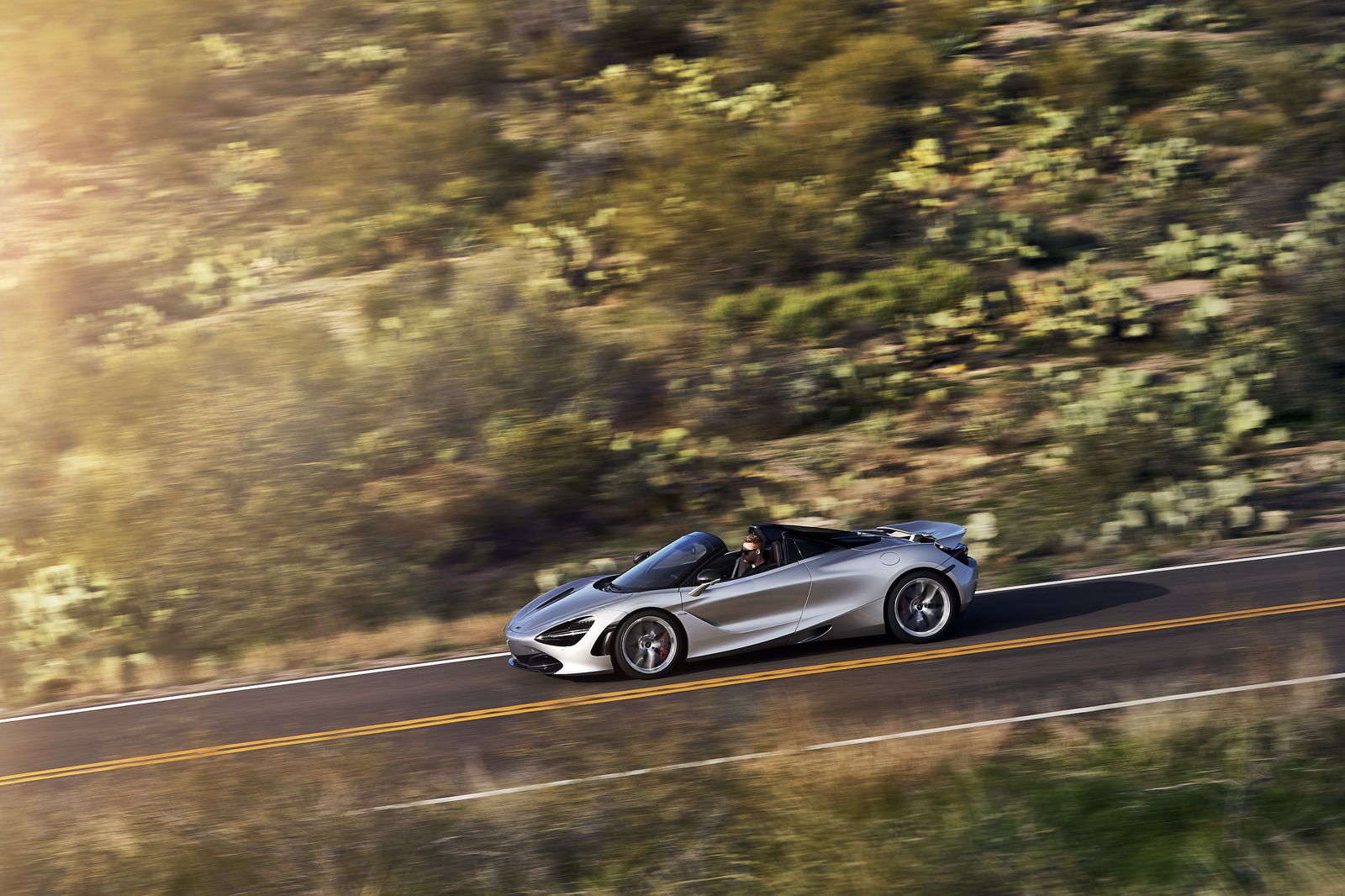
The goal behind sciencing the shit out of the chassis is simple - to keep the wheels in contact with the ground as much as possible, making for the most capable, most confidence-inspiring drive possible. And it works. I’m sure it works even better in the dry, but that’s something to find out another day.
Where the trick suspension is really impressive is when you hit sizeable imperfections in the road, which the 720S merely shrugs off. It’s always working with the surface under its tyres, never against. A lot of that is to do with the pre-emptive nature of the system - unlike a magnetorheological damper system, which has to detect a body movement before reacting as necessary, this setup makes its changes based on wheel movement, constantly taking readings at every corner. Explaining it fully would probably triple the length of this piece.
I reach the end of the road, quite literally - this twisty bit of tarmac finishes at Bartlett Reservoir, where I lift the nose of the 720S. Then, I gingerly trundle it onto a patch of dirt overlooking this thin stretch of water that breaks up the stark, rocky surroundings.
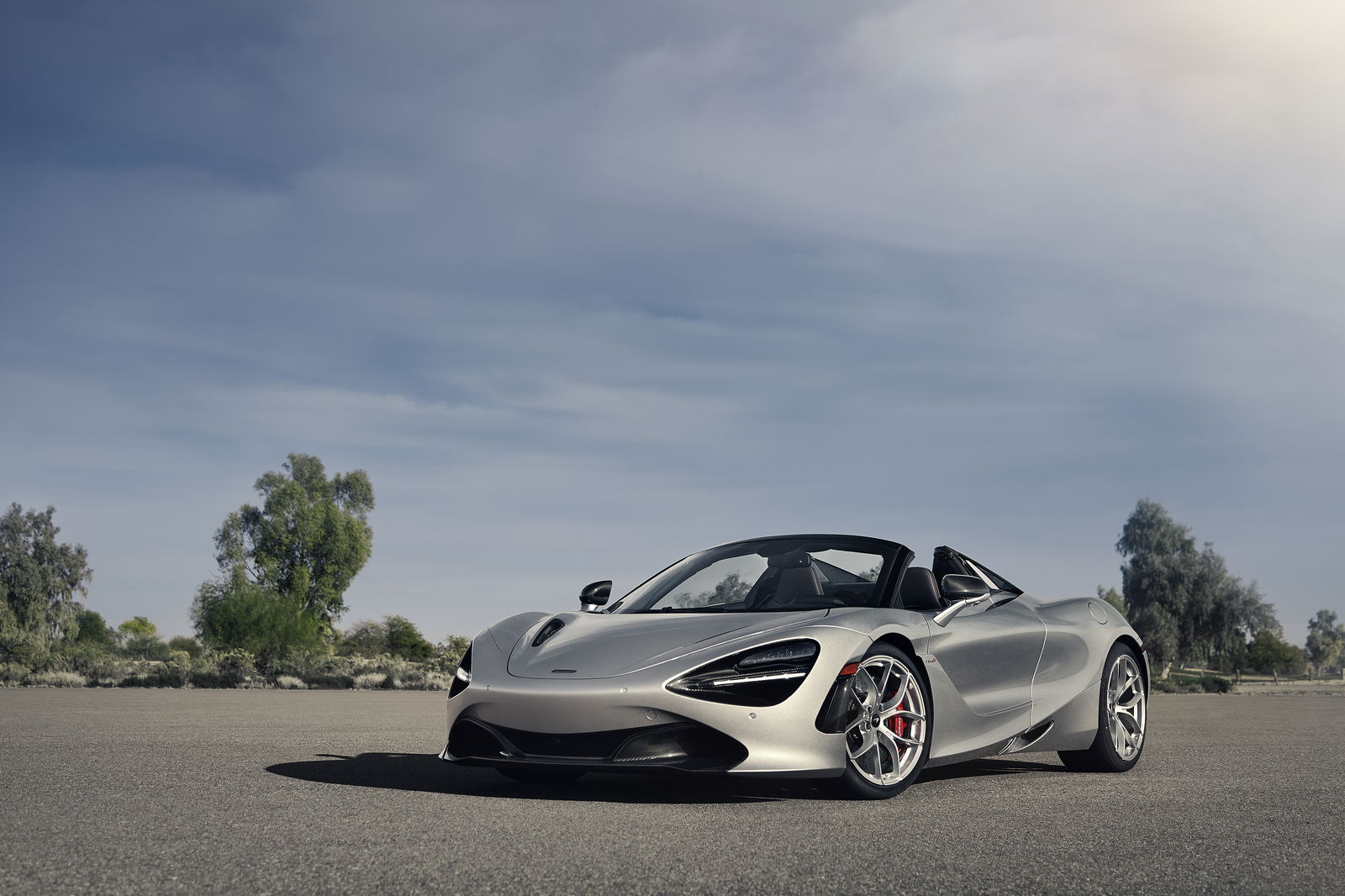
When the weather’s better it’s a popular spot for water sports, but even on a wet, quiet day like today, the arrival of this other-worldly coupe still doesn’t go unnoticed. A father and his young child turn up (in a massive pick-up, of course), and while they decide to call quits on their kayak session, it’s gladly replaced with a 720S photo-op and a barrage of questions about performance, why they’ve already seen six of the things today, and most importantly, what it is - it’ll be some time before a McLaren becomes as recognisable to Joe Public as something from Lamborghini or Ferrari.
I leave with a flurry of wheel spin and exhaust noise, ready for another slippy, slidey thrash. Here, I find particular pleasure in a 720S attribute which seems so old-school in its ethos compared to the space-age suspension: hydraulic power steering. McLaren’s engineers have stubbornly stuck with it, claiming it just can’t get the level of feedback it wants from an electric setup. I believe them.
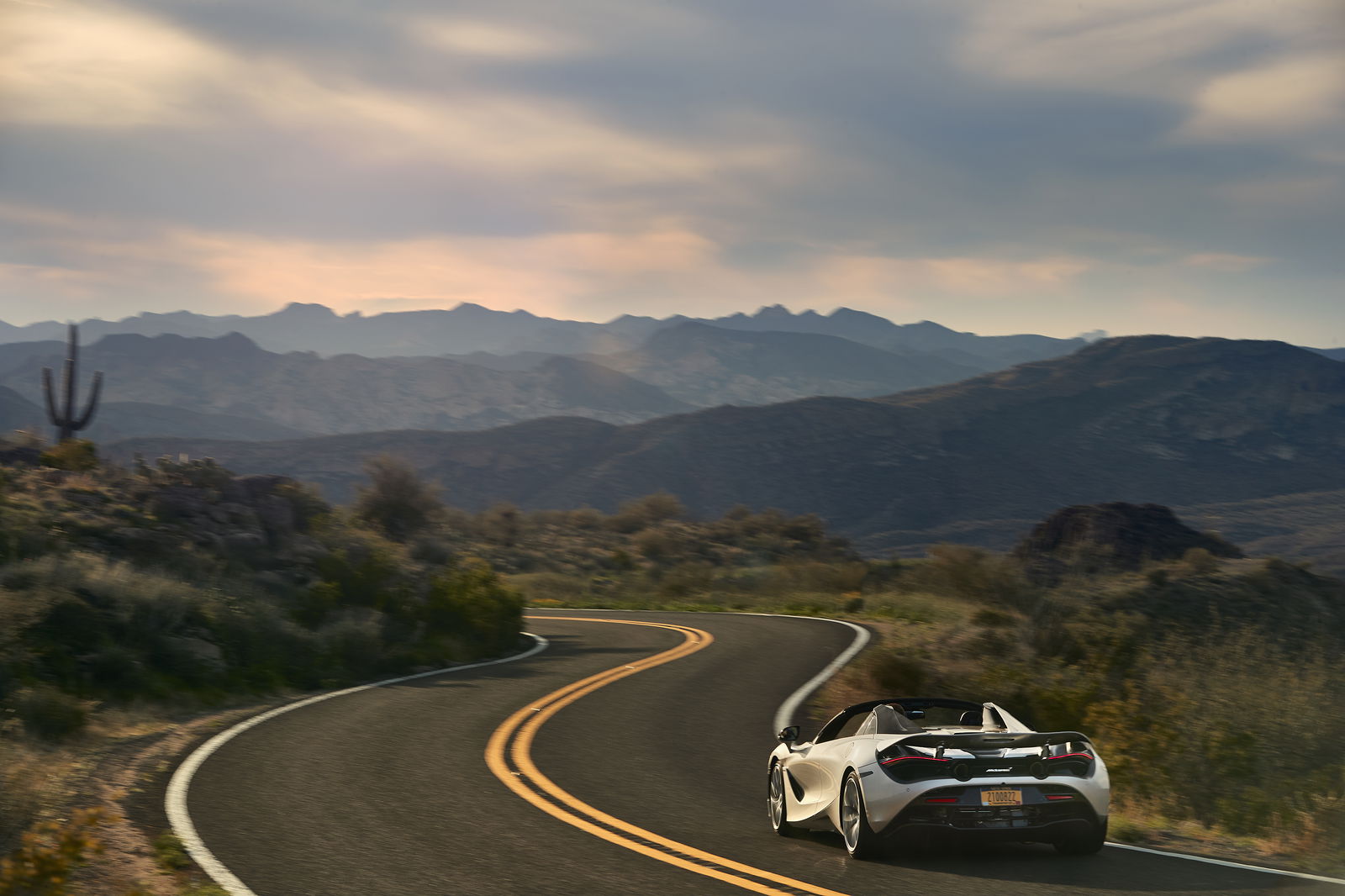
Porsche may have come as close as anyone to cracking EPAS with the 911, but away from the aggressively set up GT, you are still missing genuine steering feel. The 720S on the other hand actually gives proper - but not unnerving - kickback through the wheel. It’s also beautifully weighted, and predictably linear - I like to think mentioning dynamic/active steering or variable ratio racks to a McLaren engineer would be like insulting his or her mother.
Joining back onto the dual carriageway that leads back to the hotel, where the 600LT Spider awaits, the chassis and powertrain controls are both switched back to ‘normal’ (comfort), at which point the 720S Spider reveals its surprise trump card: it’s a brilliant, smooth-riding cruiser. Woking didn’t set out to make a GT car here, but it’s inadvertently made one. It just happens to be a drop-top supercar too.
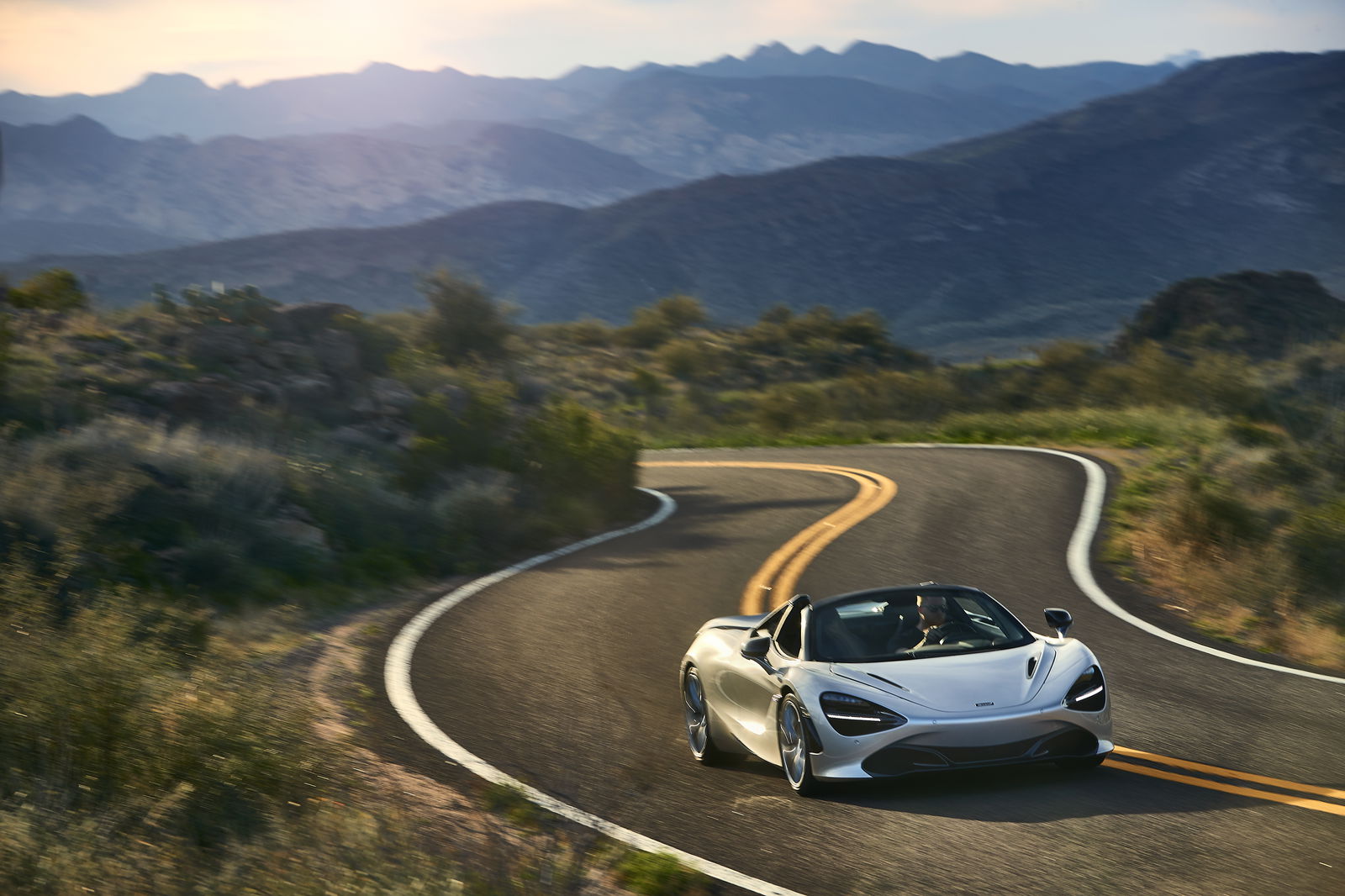
Although I haven’t been able to retract the roof as much as I’d have liked, there’s no question that the Spider body style adds a significant drama to proceedings. Whether you’ve stowed it entirely or just wound down the rear glass/wind deflector, every pop and crackle from the exhaust results in a broad grin spreading across your face. It’s impossible to resist.
The very idea of convertible supercars, as we know, makes no sense, and the idea of an especially fastidious company like McLaren deliberately compromising one of its engineering masterpieces does seem ridiculous, if you ponder the notion for too long. But it’s the very nature of how the ladies and gents at the MTC approach things that makes it possible to build one that comes without the drop-top drawbacks but with all the fun and sense of occasion. And rest assured, whether its wet or dry or if you’re cactus spotting in Arizona or bimbling around Surrey, every drive in a 720S is going to be an occasion.
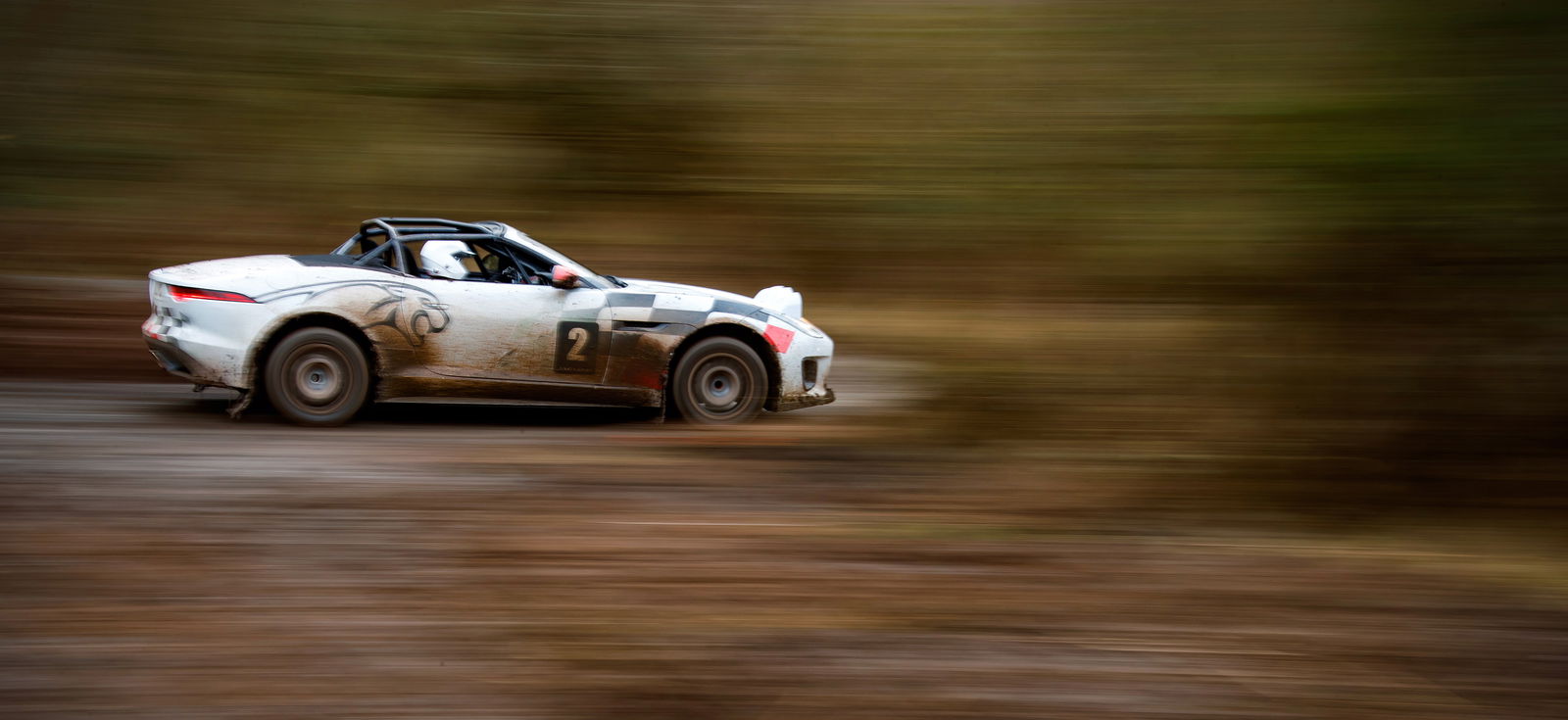
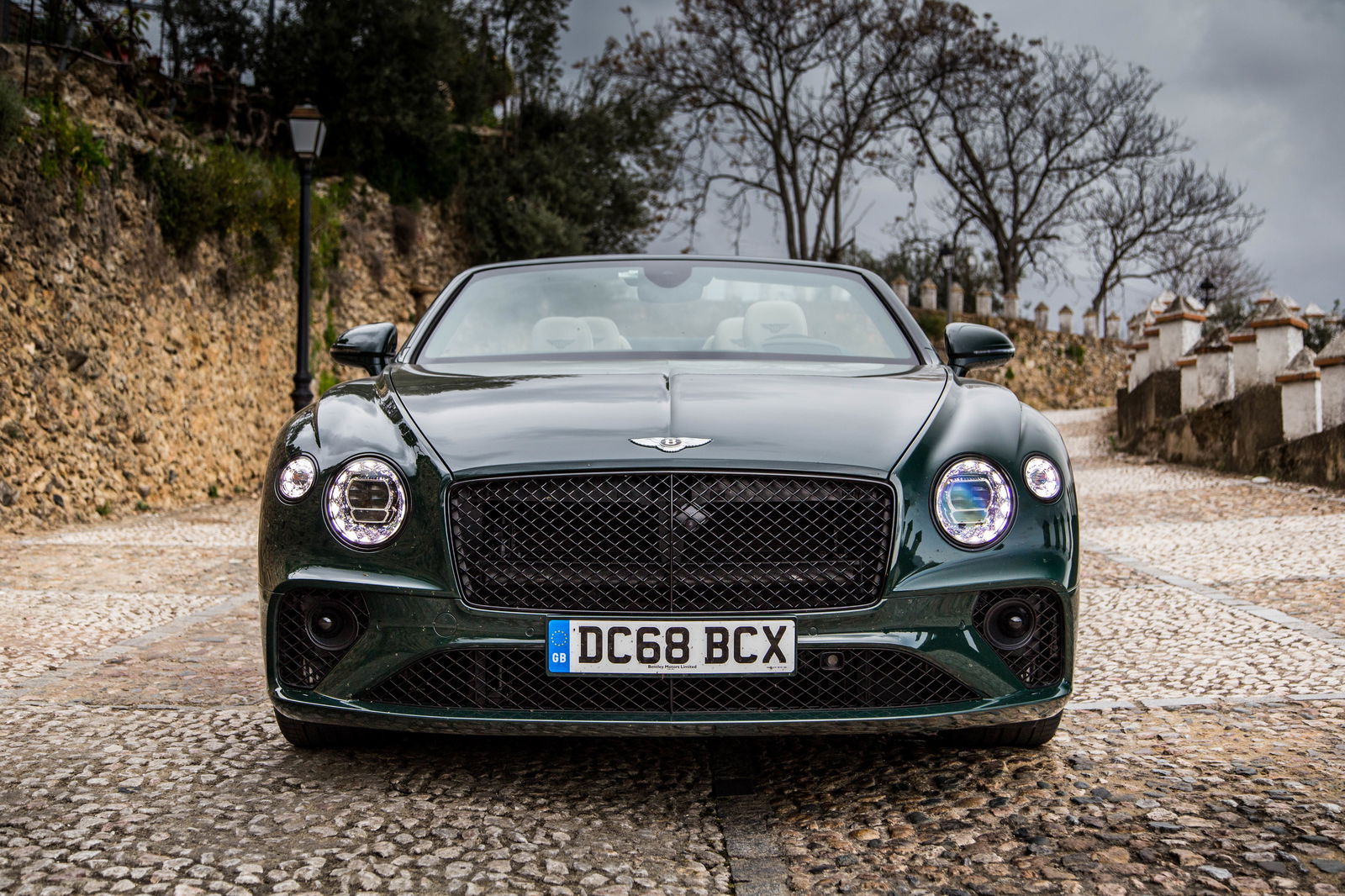

Comments
my god that’s gorgeous
For a second I thought you were revisiting the case of that one 720S that was found crashed in the desert a while back